Home » Blog
News from the MFAH Photography Department from Curator Malcolm Daniel May 2024
Posted on May 20, 2024
Dear Friends of the MFAH Photography Department,
The season is wrapping up. Photo Forum “Vote Night” was once again great fun and wholly successful. A full list of works funded by the group’s dues and by generous individual gifts is attached at the end of this letter.
This Week…
Mark your calendars for this Thursday, May 16, for a public talk by María Magdalena Campos-Pons, whose practice is multidisciplinary, but who is best known for her large-format Polaroid photographs begun in the 1990s. Campos Pons is a descendant of Hispanic, Nigerian, and Chinese immigrants to Cuba, and her work is deeply autobiographical, examining the global histories of enslavement, indentured labor, and motherhood. Using herself and her Afro-Cuban relatives as subjects, Campos-Pons creates historical narratives that illuminate the spirits of people and places, present and past. The talk, sponsored by the Latin Maecenas (the patron group for the MFAH Latin American Art Department), is open to the public free of charge, Thursday, May 16, 2024, at 6:30 p.m. in the Lynn Wyatt Theater in the Museum’s Nancy and Rich Kinder Building. More information here.
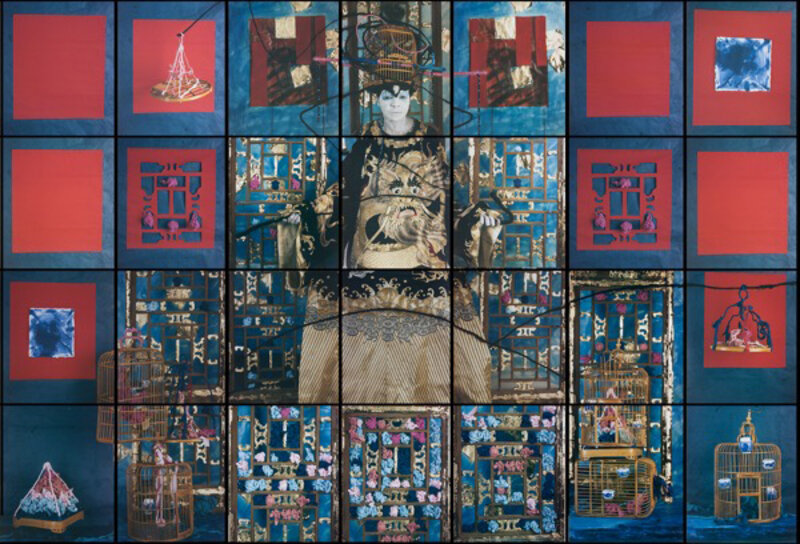
Maria Magdalena Campos-Pons
(Cuban, born 1959), Finding Balance, 2015. Dye diffusion transfer prints, 96 x 140 in. Museum purchase.
Detective Lisa Volpe is on the case…
If you remember her research into adobe styles and chow chow characteristics for Georgia O’Keeffe, Photographer, or her remarkable tracking of civil rights activists who appeared in Gordon Parks’s 1967 photographs for Gordon Parks: Stokely Carmichael and Black Power, it won’t surprise you to learn that Lisa Volpe—private detective and curator extraordinaire—is at it again.
What’s she on the trail of now? Lisa is tracking down picture magazines made for Black audiences between 1920 and 1970. While Life may be the most famous American picture magazine, its popularity among a mostly white, middle-class readership is only part of a bigger picture. In those decades, economic advancement, evolving public policy, opportunity for skill development, the Great Migration, and the Civil Rights movement all contributed to the growth of a diverse Black middle class. Black picture magazines flourished by reflecting the lives, aspirations, adversities, and successes of this group. Yet, illustrated magazines produced for a Black readership have been overlooked by scholars. With partners Anjuli Leibowitz, Curator at the Portland Museum of Art, and Brian Piper, Curator at New Orleans Museum of Art, Lisa is conducting research for an exhibition highlighting the photographers and photo essays featured on the pages of these magazines.
The exhibition is scheduled to open in Houston in 2027, but the work has already begun. With no comprehensive list of Black magazines in existence, Lisa is working closely with MFAH’s Chief of Libraries and Archives, Jon Evans, to track down magazines and to create that complete bibliography. So far she’s identified 50 publications, has scanned 302 individual issues, and recorded in her growing database the photographer, number of images, and thematic keywords for more than 3,000 articles. But that’s just the beginning! The team has identified 168 more Black picture magazines to explore. Good thing there’s still time before 2027!

Recent books by some of our friends…
It’s a pleasure to point out a few new books by some Houston friends and friends of MFAH’s photography department:

Aimee McCrory, Roller Coaster. Scenes from a Marriage (Kehrer, 2023). ISBN 978- 3969001288.
Drawing upon her background in theater, McCrory creates pseudo documentary images of the highs and lows of her 42-year relationship with her husband, Don, and of her own thoughts about aging.

Richard Frishman, Ghosts of Segregation. American Racism, Hidden in Plain Sight (Celedon, 2024) ISBN 978-1250831682.
Frishman’s photographs explore the vestiges of America's racism evident in the built environment, hidden in plain sight: schools for "colored" children, theatre entrances and restrooms for "colored people," lynching sites, juke joints, jails, hotels and bus stations.

Jamey Stillings, Atacama: Renewable Energy and Mining in the High Desert of Chile
(Steidl, 2023) ISBN 978-3958297080.
With his distinctive aerial perspective, Stillings examines dramatic large-scale renewable energy projects, the visual dynamic of enormous mining operations, and the stark beauty of the Atacama Desert, scarred by human activity.

Keith Carter, Ghostlight (University of Texas Press, 2022) ISBN 978-1477326558.
Southern wetlands, with their moss-draped trees and dark water obscuring mysteries below, are eerily beautiful places, home to ghost stories and haunting, ethereal light. Carter’s newest book captures the otherwordly spirits of swamps, marshes, bogs, baygalls, bayous, and fens in more than a hundred photographs.
Photographs Purchased at Photo Forum Vote Night

Jules Duclos, Collapse of the Sainte-Croix Church, Quimperlé, 1862, Museum purchase funded by Photo Forum 2024 and Patricia Eifel
Jules Duclos, who spent most of his career photographing the great engineering projects of his era—bridges, viaducts, stations, ports, lighthouses—here recorded the aftermath of a colossal structural failure, the collapse of the belltower of the church of Sainte-Croix, destroying much of the 11th-century church as it fell.

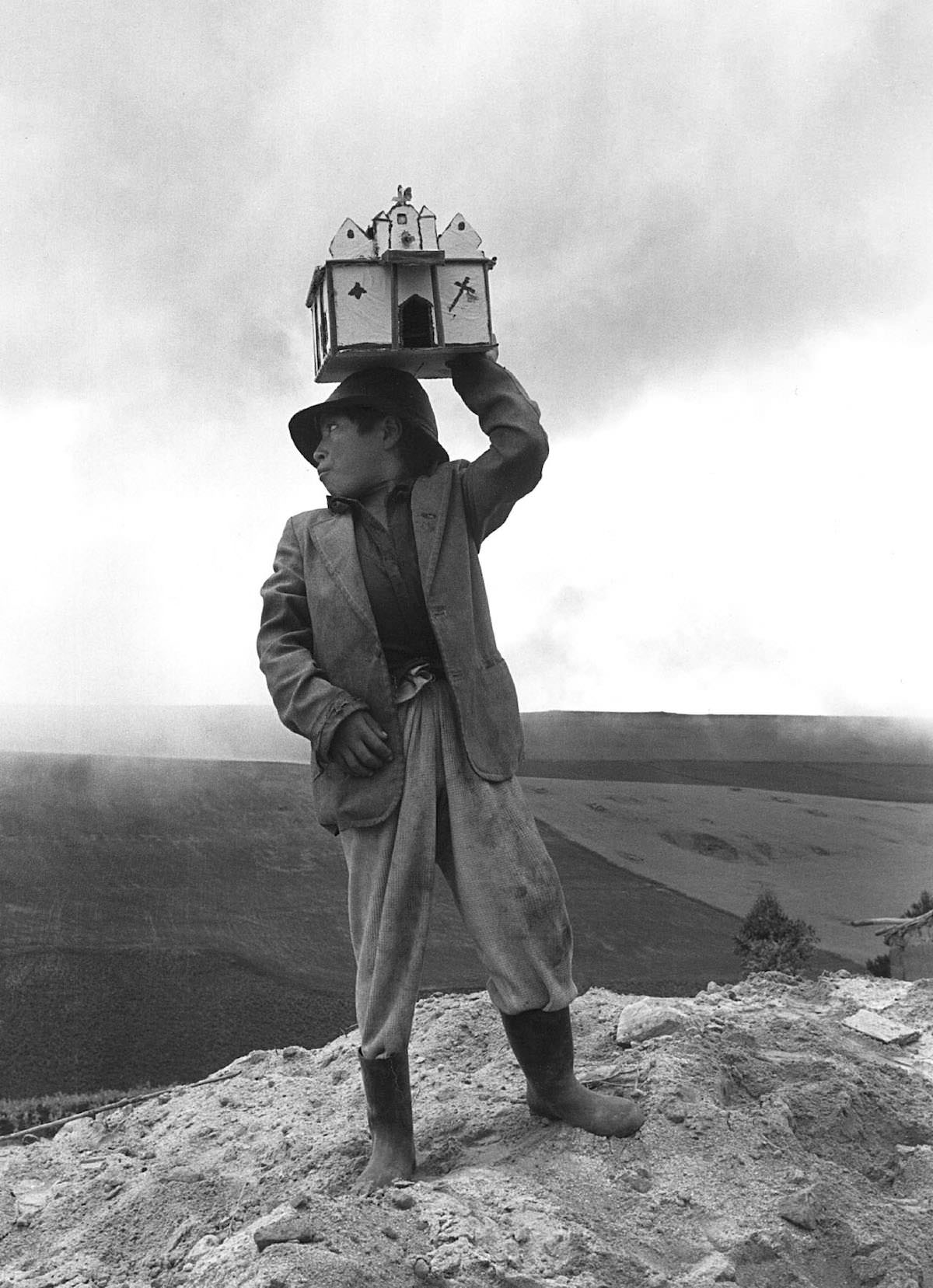
Flor Garduño, Camino del Campsanto, Tixán, Ecuador, 1988; La Santa Iglesia, Catolica, Ecuador, 1991, Museum purchases funded by Tim Linehan and Carol Strawn
Two photographs made in Peru by the great Mexican photographer Flor Garduño, who perfected her techniqueas a darkroom assistant for Manuel Álvarez Bravo.
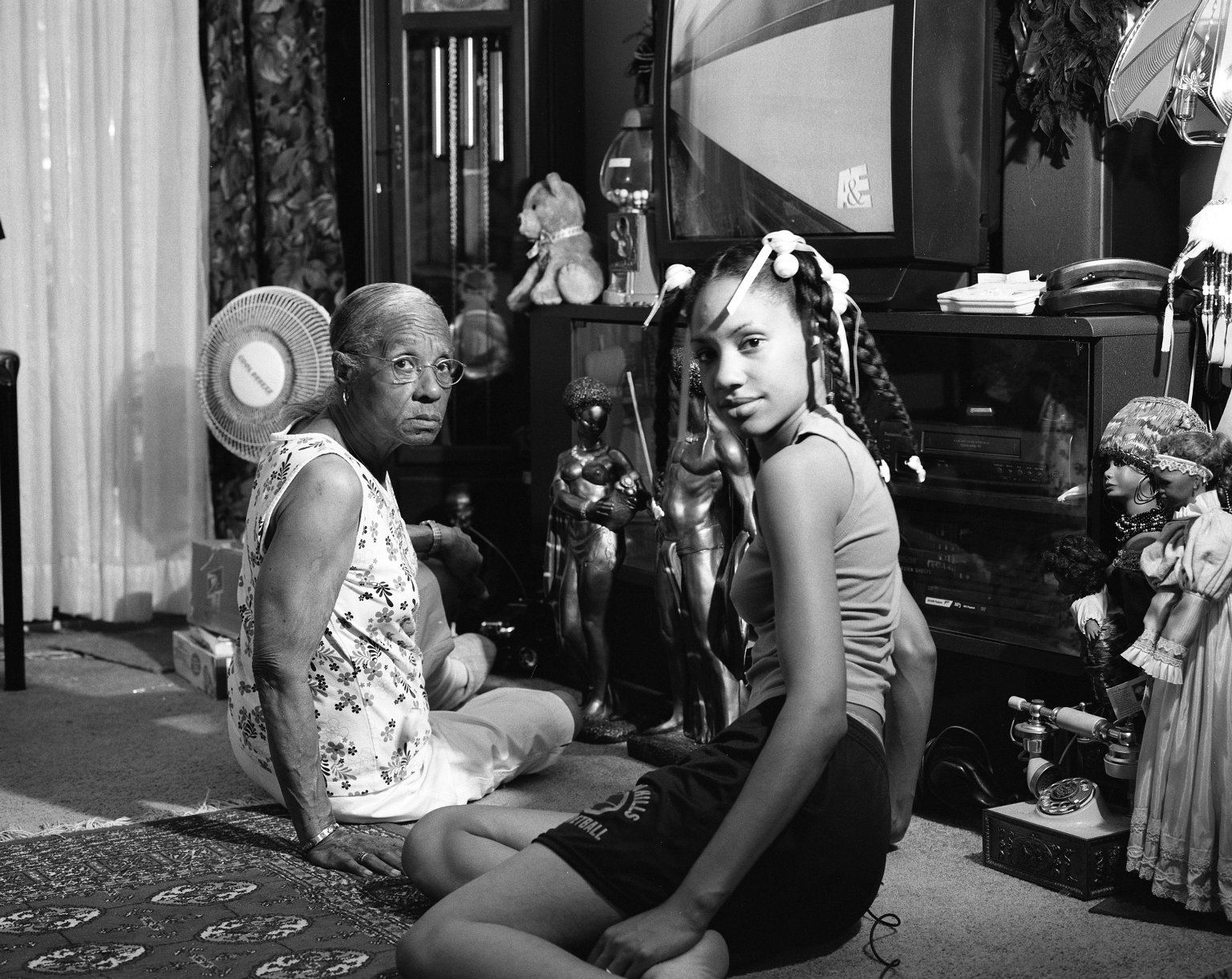
LaToya Ruby Frazier, Grandma Ruby and Me from the series The Notion of Family, 2005, Museum purchase funded by the S. I. and Susie Morris Photography Endowment, Photo Forum 2024, Rashed Haq, Michael and Beth Schneider, and Kerry Inman and Denby Auble
Frazier’s series The Notion of Family was prompted by her discovery that histories of her once-prosperous home town, Braddock, Pennsylvania, failed to mention the generations of African American workers that labored in its steel mills. She set out to tell their story through three generations of women in her own family.
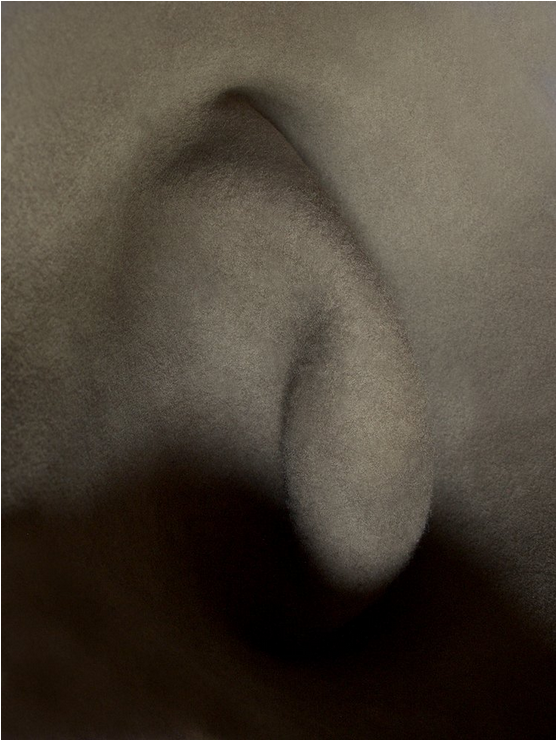
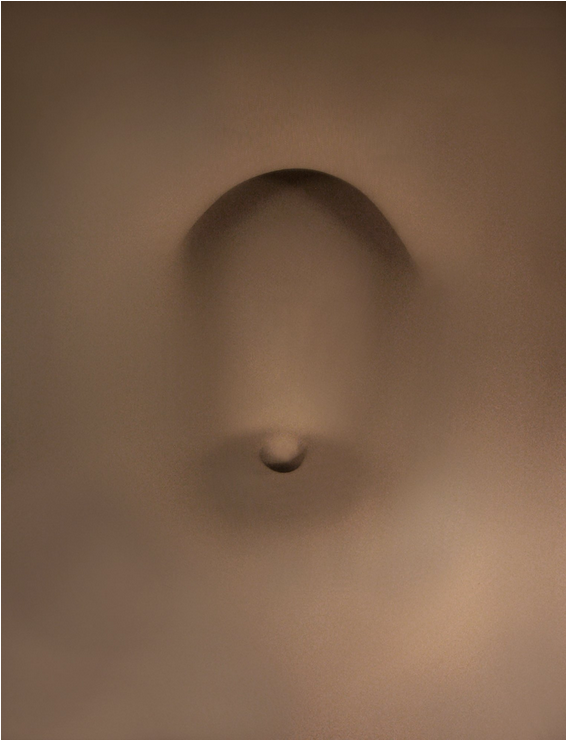
Anne Mandelbaum, Hat #5, 2007, printed 2024, Museum purchase funded by Joan Morgenstern; Throne #8, 2009, printed 2024, Museum purchase funded by Photo Forum 2024
Mandelbaum’s photographs make the ordinary seem strange. Her subjects are personal, even intimate, often pushing sensory experience into the sensual realm. These two enigmatic images are more suggestive than documentary, tinged perhaps with a wink and a dash of naughty humor.
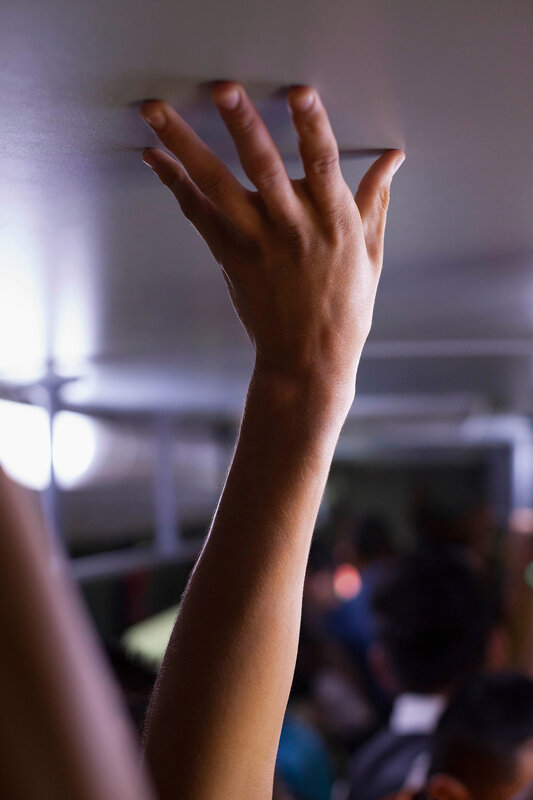
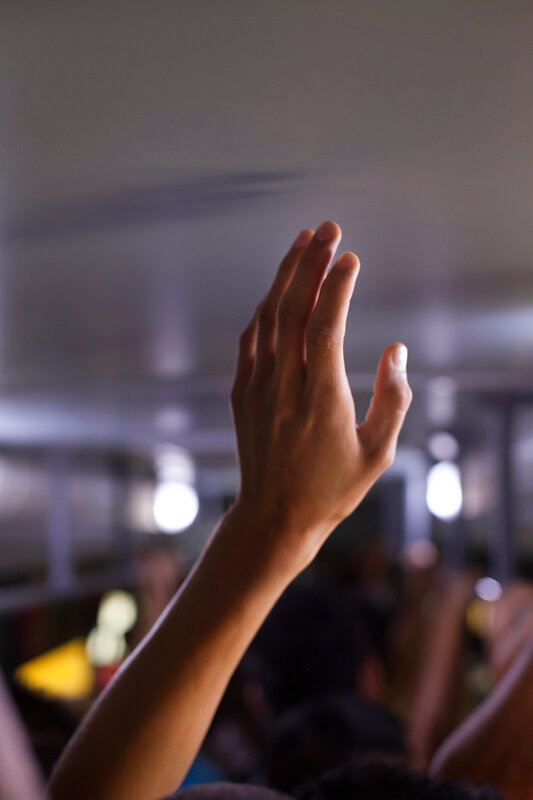
%20Available%20for%20Sale%20Artsy.png)
Alejandro Cartagena, Suburban Bus #55, 2015, Museum purchase funded by Joan Morgenstern; Suburban Bus #56, 2015, Museum purchase funded by Jim and Laurie Mahoney; Suburban Bus #58, 2015, Gift of the artist and Patricia Conde Gallery
In this series, Cartagena explores the everyday struggles and the moments of grace in Mexico’s packed cities, as rush hour bus riders reach for the ceiling to keep balance. Their delicate, almost religious gestures emphasize the humanity and hope that accompanies their journey.
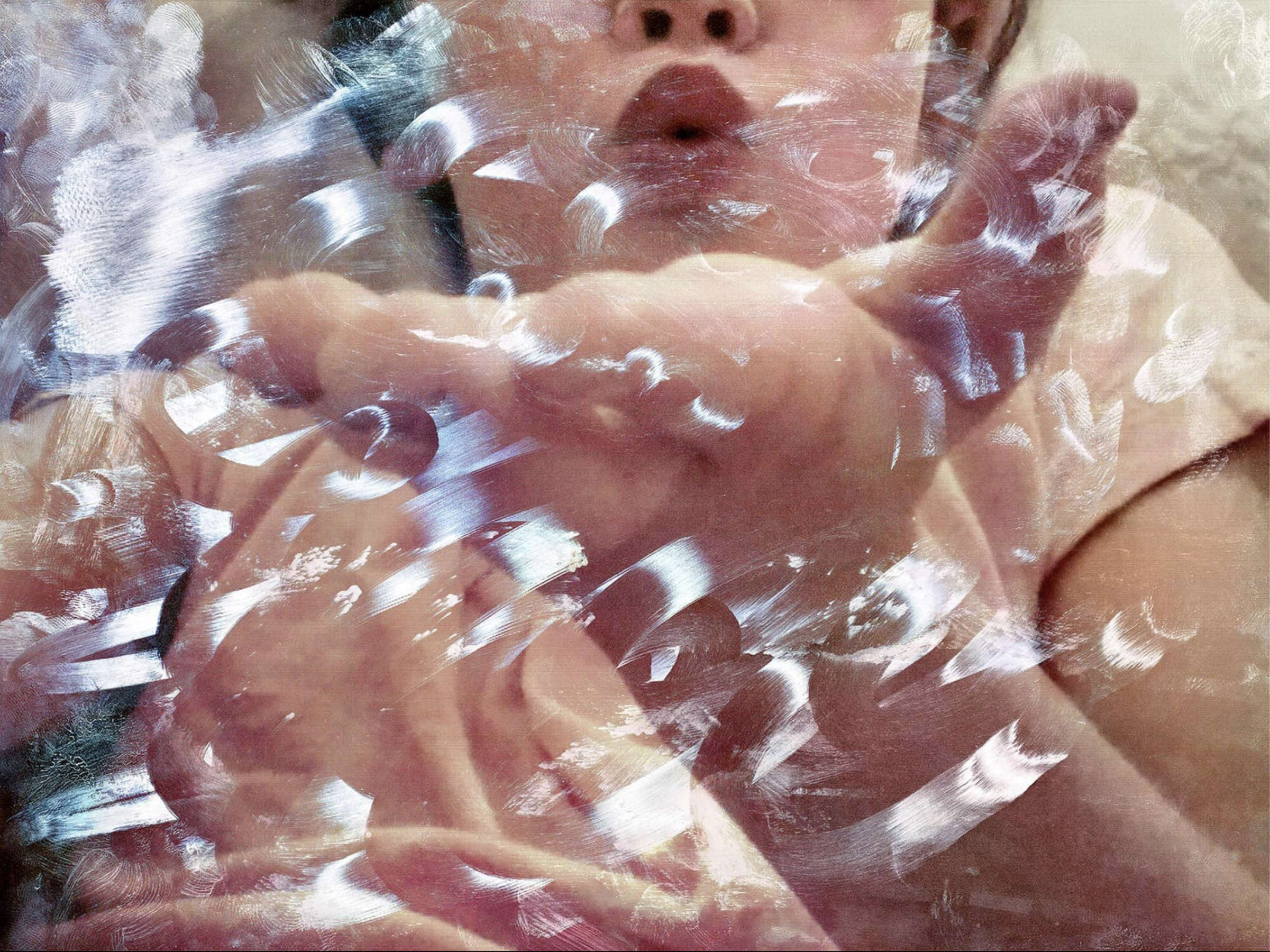
Tabitha Soren, Emailed Kiss Goodnight, 2016, Museum purchase funded by Photo Forum 2024 and Ken Frederick
The image shows the artist’s daughter Dixie, who circumvented family rules of always kissing each other goodnight by emailing her mother this goodnight kiss. On that night, the image was cause for a strict talk between mother and daughter; today it holds different meaning. Dixie died in a car accident, and this image of her good-night kiss is now what Soren touches each night before bed.
![Linarejos Moreno: On The Geography [Processes] | Galeria Daniel Cuevas](https://galeriadanielcuevas.com/wp-content/uploads/2023/11/A6010617-2-1024x708.jpg)
Linarejos Moreno, On the Geography of Green I-I, 2016–21, Museum purchase funded by Photo Forum 2024 and Tania Pramir
Moreno’s series On the Geography of Green combines large-scale images with data tables to explore the geographical and social realities of abandoned drive-in theaters in the southern United States. Her work draws from and comments on various sources, from Alexander von Humbolt’s journeys through America around 1800 to The Green Book.

Caleb Stein, Further into the production of Artist Filippo Tincolini’s sculpture at Robotor, with view of Carrara Mountain behind the working station, 2023, Museum purchase funded by Photo Forum 2024 and Patricia Eifel
Sent on a commission for Smithsonian Magazine, Caleb Stein traveled to to the quarries of Carrara, prized since antiquity for their pure white marble, to photograph Robotor, a company that utilizes robotics for much of the sculptural process.
%20•%20Instagram%20photos%20and%20videos.png)
Kaima Marie Akarue, And the beat goes on…, 2023, Museum purchase funded by the Francis L. Lederer Foundation, courtesy of Sharon Lederer
Akarue combines family snapshots, her own photographs, and images sourced in shelter and lifestyle magazines to portray her memories, present reality, and aspirations. At the heart of this collage is her Nigerian father, whose vinyl record collection and love of 1970s American music is a shared passion that links father and daughter.
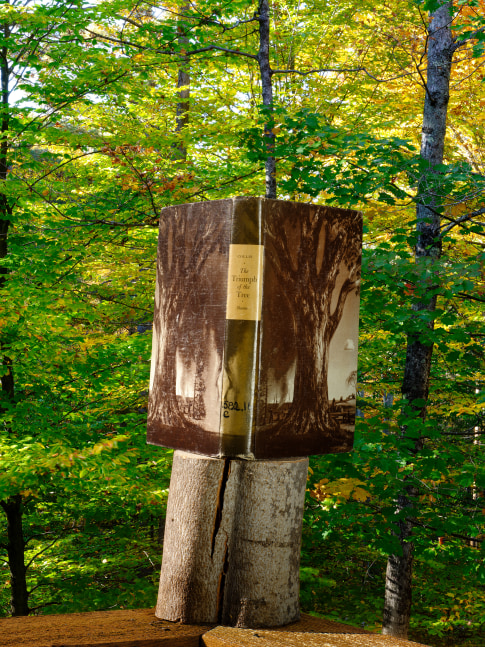
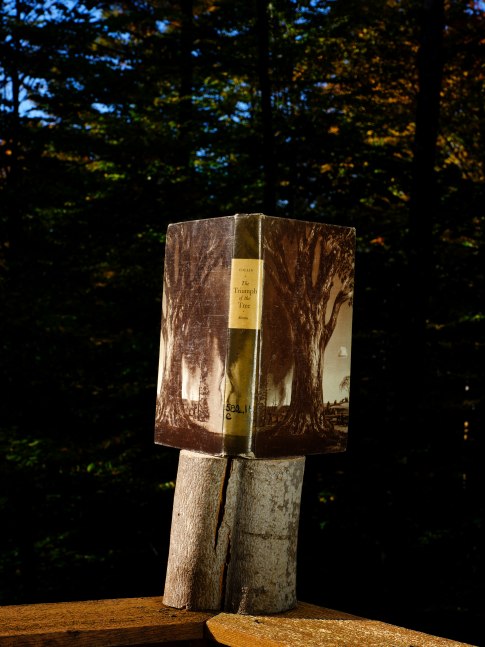
MANUAL (Hill & Bloom), The Triumph of the Tree (by John Stewart Collis), Night; The Triumph of the Tree (by John Stewart Collis), Day, 2023, Museum purchase funded by Joan Morgenstern, Anne Wilkes Tucker, and Jereann Chaney
Pioneers of digital imaging and conceptual art, Ed Hill and Suzanne Bloom, began their partnership in 1974. The present series, produced during a Guggenheim Foundation fellowship, explores the connection between word and image, verbal and visual languages.
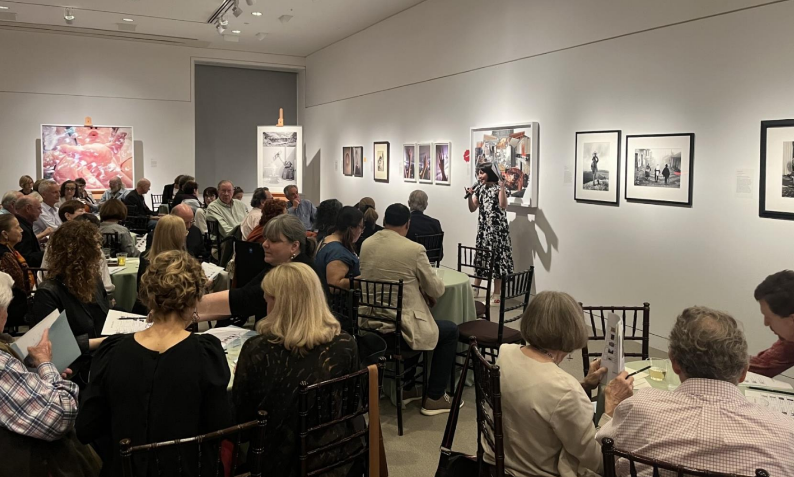
News from the MFAH Photography Department from Curator Malcolm Daniel May 2024
Posted on May 20, 2024
Dear Friends of the MFAH Photography Department,
The season is wrapping up. Photo Forum “Vote Night” was once again great fun and wholly successful. A full list of works funded by the group’s dues and by generous individual gifts is attached at the end of this letter.
This Week…
Mark your calendars for this Thursday, May 16, for a public talk by María Magdalena Campos-Pons, whose practice is multidisciplinary, but who is best known for her large-format Polaroid photographs begun in the 1990s. Campos Pons is a descendant of Hispanic, Nigerian, and Chinese immigrants to Cuba, and her work is deeply autobiographical, examining the global histories of enslavement, indentured labor, and motherhood. Using herself and her Afro-Cuban relatives as subjects, Campos-Pons creates historical narratives that illuminate the spirits of people and places, present and past. The talk, sponsored by the Latin Maecenas (the patron group for the MFAH Latin American Art Department), is open to the public free of charge, Thursday, May 16, 2024, at 6:30 p.m. in the Lynn Wyatt Theater in the Museum’s Nancy and Rich Kinder Building. More information here.

Maria Magdalena Campos-Pons
(Cuban, born 1959), Finding Balance, 2015. Dye diffusion transfer prints, 96 x 140 in. Museum purchase.
Detective Lisa Volpe is on the case…
If you remember her research into adobe styles and chow chow characteristics for Georgia O’Keeffe, Photographer, or her remarkable tracking of civil rights activists who appeared in Gordon Parks’s 1967 photographs for Gordon Parks: Stokely Carmichael and Black Power, it won’t surprise you to learn that Lisa Volpe—private detective and curator extraordinaire—is at it again.
What’s she on the trail of now? Lisa is tracking down picture magazines made for Black audiences between 1920 and 1970. While Life may be the most famous American picture magazine, its popularity among a mostly white, middle-class readership is only part of a bigger picture. In those decades, economic advancement, evolving public policy, opportunity for skill development, the Great Migration, and the Civil Rights movement all contributed to the growth of a diverse Black middle class. Black picture magazines flourished by reflecting the lives, aspirations, adversities, and successes of this group. Yet, illustrated magazines produced for a Black readership have been overlooked by scholars. With partners Anjuli Leibowitz, Curator at the Portland Museum of Art, and Brian Piper, Curator at New Orleans Museum of Art, Lisa is conducting research for an exhibition highlighting the photographers and photo essays featured on the pages of these magazines.
The exhibition is scheduled to open in Houston in 2027, but the work has already begun. With no comprehensive list of Black magazines in existence, Lisa is working closely with MFAH’s Chief of Libraries and Archives, Jon Evans, to track down magazines and to create that complete bibliography. So far she’s identified 50 publications, has scanned 302 individual issues, and recorded in her growing database the photographer, number of images, and thematic keywords for more than 3,000 articles. But that’s just the beginning! The team has identified 168 more Black picture magazines to explore. Good thing there’s still time before 2027!
Recent books by some of our friends…
It’s a pleasure to point out a few new books by some Houston friends and friends of MFAH’s photography department:

Aimee McCrory, Roller Coaster. Scenes from a Marriage (Kehrer, 2023). ISBN 978- 3969001288.
Drawing upon her background in theater, McCrory creates pseudo documentary images of the highs and lows of her 42-year relationship with her husband, Don, and of her own thoughts about aging.

Richard Frishman, Ghosts of Segregation. American Racism, Hidden in Plain Sight (Celedon, 2024) ISBN 978-1250831682.
Frishman’s photographs explore the vestiges of America's racism evident in the built environment, hidden in plain sight: schools for "colored" children, theatre entrances and restrooms for "colored people," lynching sites, juke joints, jails, hotels and bus stations.

Jamey Stillings, Atacama: Renewable Energy and Mining in the High Desert of Chile
(Steidl, 2023) ISBN 978-3958297080.
With his distinctive aerial perspective, Stillings examines dramatic large-scale renewable energy projects, the visual dynamic of enormous mining operations, and the stark beauty of the Atacama Desert, scarred by human activity.

Keith Carter, Ghostlight (University of Texas Press, 2022) ISBN 978-1477326558.
Southern wetlands, with their moss-draped trees and dark water obscuring mysteries below, are eerily beautiful places, home to ghost stories and haunting, ethereal light. Carter’s newest book captures the otherwordly spirits of swamps, marshes, bogs, baygalls, bayous, and fens in more than a hundred photographs.
Photographs Purchased at Photo Forum Vote Night

Jules Duclos, Collapse of the Sainte-Croix Church, Quimperlé, 1862, Museum purchase funded by Photo Forum 2024 and Patricia Eifel
Jules Duclos, who spent most of his career photographing the great engineering projects of his era—bridges, viaducts, stations, ports, lighthouses—here recorded the aftermath of a colossal structural failure, the collapse of the belltower of the church of Sainte-Croix, destroying much of the 11th-century church as it fell.

Flor Garduño, Camino del Campsanto, Tixán, Ecuador, 1988; La Santa Iglesia, Catolica, Ecuador, 1991, Museum purchases funded by Tim Linehan and Carol Strawn
Two photographs made in Peru by the great Mexican photographer Flor Garduño, who perfected her techniqueas a darkroom assistant for Manuel Álvarez Bravo.

LaToya Ruby Frazier, Grandma Ruby and Me from the series The Notion of Family, 2005, Museum purchase funded by the S. I. and Susie Morris Photography Endowment, Photo Forum 2024, Rashed Haq, Michael and Beth Schneider, and Kerry Inman and Denby Auble
Frazier’s series The Notion of Family was prompted by her discovery that histories of her once-prosperous home town, Braddock, Pennsylvania, failed to mention the generations of African American workers that labored in its steel mills. She set out to tell their story through three generations of women in her own family.


Anne Mandelbaum, Hat #5, 2007, printed 2024, Museum purchase funded by Joan Morgenstern; Throne #8, 2009, printed 2024, Museum purchase funded by Photo Forum 2024
Mandelbaum’s photographs make the ordinary seem strange. Her subjects are personal, even intimate, often pushing sensory experience into the sensual realm. These two enigmatic images are more suggestive than documentary, tinged perhaps with a wink and a dash of naughty humor.


%20Available%20for%20Sale%20Artsy.png)
Alejandro Cartagena, Suburban Bus #55, 2015, Museum purchase funded by Joan Morgenstern; Suburban Bus #56, 2015, Museum purchase funded by Jim and Laurie Mahoney; Suburban Bus #58, 2015, Gift of the artist and Patricia Conde Gallery
In this series, Cartagena explores the everyday struggles and the moments of grace in Mexico’s packed cities, as rush hour bus riders reach for the ceiling to keep balance. Their delicate, almost religious gestures emphasize the humanity and hope that accompanies their journey.

Tabitha Soren, Emailed Kiss Goodnight, 2016, Museum purchase funded by Photo Forum 2024 and Ken Frederick
The image shows the artist’s daughter Dixie, who circumvented family rules of always kissing each other goodnight by emailing her mother this goodnight kiss. On that night, the image was cause for a strict talk between mother and daughter; today it holds different meaning. Dixie died in a car accident, and this image of her good-night kiss is now what Soren touches each night before bed.
![Linarejos Moreno: On The Geography [Processes] | Galeria Daniel Cuevas](https://galeriadanielcuevas.com/wp-content/uploads/2023/11/A6010617-2-1024x708.jpg)
Linarejos Moreno, On the Geography of Green I-I, 2016–21, Museum purchase funded by Photo Forum 2024 and Tania Pramir
Moreno’s series On the Geography of Green combines large-scale images with data tables to explore the geographical and social realities of abandoned drive-in theaters in the southern United States. Her work draws from and comments on various sources, from Alexander von Humbolt’s journeys through America around 1800 to The Green Book.

Caleb Stein, Further into the production of Artist Filippo Tincolini’s sculpture at Robotor, with view of Carrara Mountain behind the working station, 2023, Museum purchase funded by Photo Forum 2024 and Patricia Eifel
Sent on a commission for Smithsonian Magazine, Caleb Stein traveled to to the quarries of Carrara, prized since antiquity for their pure white marble, to photograph Robotor, a company that utilizes robotics for much of the sculptural process.
%20•%20Instagram%20photos%20and%20videos.png)
Kaima Marie Akarue, And the beat goes on…, 2023, Museum purchase funded by the Francis L. Lederer Foundation, courtesy of Sharon Lederer
Akarue combines family snapshots, her own photographs, and images sourced in shelter and lifestyle magazines to portray her memories, present reality, and aspirations. At the heart of this collage is her Nigerian father, whose vinyl record collection and love of 1970s American music is a shared passion that links father and daughter.


MANUAL (Hill & Bloom), The Triumph of the Tree (by John Stewart Collis), Night; The Triumph of the Tree (by John Stewart Collis), Day, 2023, Museum purchase funded by Joan Morgenstern, Anne Wilkes Tucker, and Jereann Chaney
Pioneers of digital imaging and conceptual art, Ed Hill and Suzanne Bloom, began their partnership in 1974. The present series, produced during a Guggenheim Foundation fellowship, explores the connection between word and image, verbal and visual languages.



Comments (0)
Add a Comment